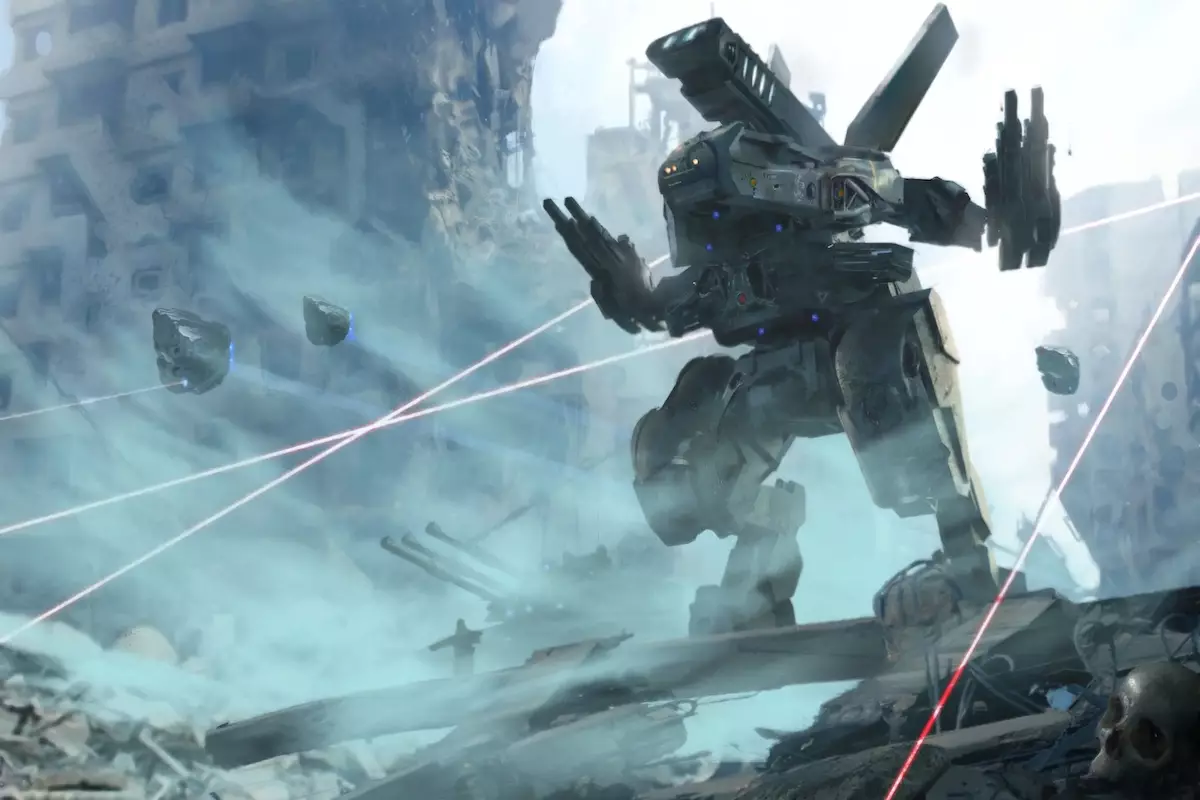As the evolving landscape of online gaming seeks more dynamic experiences, developers must relentlessly pursue advancements that amplify performance and player engagement. One such notable transition is MetalCore’s migration to the Solana blockchain. This strategic move is not just a technical upgrade but encapsulates a vision to reshape the gaming experience in a burgeoning digital ecosystem.
MetalCore invites players to immerse themselves in a post-apocalyptic battleground where they pilot colossal mechs, engaging in combat that fuses first-person shooter mechanics with vehicular warfare. This amalgamation positions MetalCore as a complex and robust gaming choice, rooted deeply in strategy, resource management, and player alliances. Unlike conventional gaming environments, MetalCore proudly integrates Web3 technologies, empowering players to own and trade in-game assets—ranging from mechs and weapons to territory—through blockchain-enabled non-fungible tokens (NFTs). This ownership translates into a vibrant in-game economy, unleashing unprecedented layers of player interaction and economic dynamics.
The imperative behind MetalCore’s shift to Solana lies significantly in the performance capabilities of this innovative blockchain. With the growing demand for responsive, real-time gaming experiences, Solana’s architecture stands out due to its impressive capabilities: a staggering throughput of 3,000 transactions per second (TPS). This level of efficiency is crucial for the instantaneous actions and quick decision-making that MetalCore requires. Traditional blockchain systems, often hindered by latency and transaction lags, pose barriers that can impair gameplay; thus, Solana’s near-instantaneous transaction processing emerges as a much-needed remedy.
Moreover, Solana Labs’ GameShift platform brings to the table an integrated payment mechanism that enhances user experience. This feature alleviates the friction typically faced by players transitioning from Web2 to Web3, facilitating a more seamless experience with in-game purchases. In layman’s terms, players unfamiliar with blockchain technology will find it relatively uncomplicated to engage with MetalCore’s Web3 ecosystem.
MetalCore’s developers have more than just the present in their sights; they are looking towards a future equipped for sustainability and scalability. The upcoming Firedancer upgrade in 2025 is one significant example, promising enhancements that will further bolster Solana’s capacity. As the blockchain evolves, MetalCore will similarly benefit from the expanded functionalities and lowered operational costs, allowing the game to gracefully scale without compromising performance.
With lower transaction fees and faster processing times, players can expect a frictionless experience where every decision counts in the heat of battle. MetalCore caters to an audience that craves speed and precision, making Solana’s high TPS vital for maintaining the adrenaline-fueled excitement inherent in mech combat.
The advantages of transitioning to Solana extend beyond performance metrics; they delve into asset management and player agency. Under Solana’s infrastructure, MetalCore facilitates the conversion of in-game assets into tradable, tangible Web3 assets. Players gain new avenues to connect with their digital belongings while having the freedom to trade or sell them outside the confines of the game. This broadens the economic engagement for players, crafting a more dynamic and user-driven economy.
The smooth execution of Web3 transactions harnesses Solana’s attributes to provide a lag-free, immersive environment. While navigating the intense battles of MetalCore, players will relish the absence of disruptions that often plague traditional blockchain games. As they migrate existing assets to Solana with the onset of season 2, players will directly experience the transformed landscape brought by this transition.
For the MetalCore development team, transitioning to Solana frees creative resources, allowing them to concentrate on innovation rather than merely troubleshooting scalability issues. The shift enables the possibility for richer game mechanics, expansive world-building, and a comprehensive economic ecosystem within MetalCore.
Ultimately, MetalCore’s migration to Solana represents a holistic leap into an era that prioritizes player experience, security, and engagement. The implications of enhanced speed, lower fees, and an expanding digital environment offer broad prospects for the gaming community and developers alike. As MetalCore positions itself at the vanguard of the blockchain gaming sector, the gaming community can anticipate a revolutionized experience that blurs the lines between gameplay and real-world economics.
MetalCore’s move to Solana is not merely a reaction to current trends but a strategic decision poised to elevate the game’s standing within the blockchain gaming universe. With promising developments on the horizon, both players and developers have much to look forward to in this exhilarating partnership.
















Leave a Reply